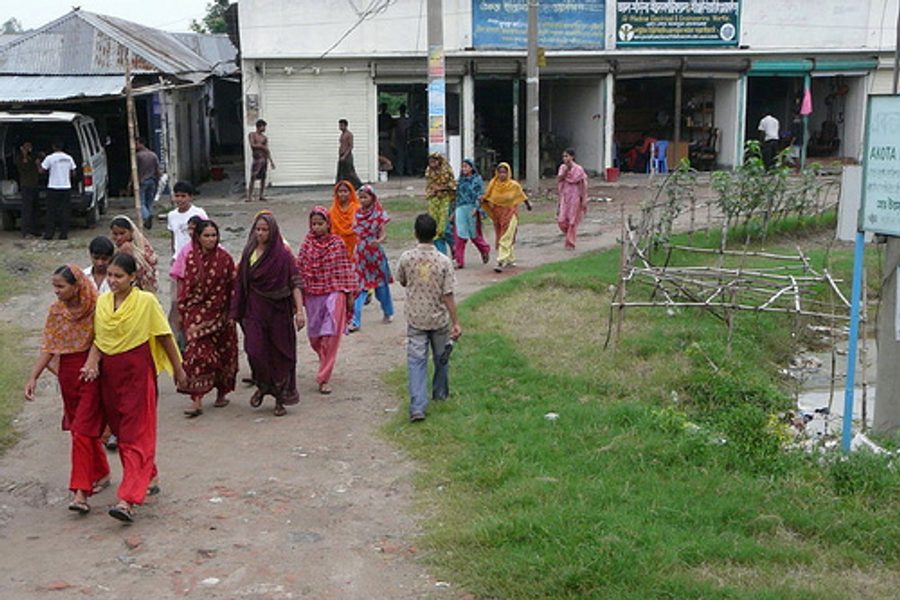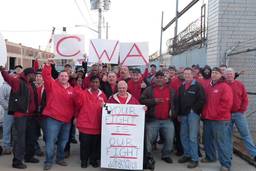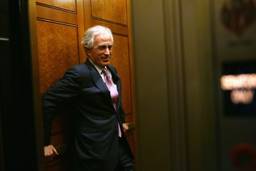Bangladeshi reporter Emran Hossain has a tour-de-force article detailing how the government has paid only lip service to protecting workers rights in the wake of a deadly factory collapse. From The Huffington Post:
In the wake of the Rana Plaza building collapse that claimed 1,129 lives, the Bangladeshi government announced earlier this month that it had made dozens of amendments to national labor law in an effort to better protect workers. While those changes have been hailed in the media as pro-worker and stronger than earlier law, in reality those amendments barely improve safeguards for impoverished garment-sector workers, and in some cases they undermine existing ones.
Legal experts and labor rights activists in Bangladesh explained to The Huffington Post how a number of the amendments will ultimately benefit business interests, rather than the employees they were intended to serve.
Jim Yardley, reporting from Dhaka, Bangladesh, also has a powerful story on how the garment industry continues to work its way around the law. From the New York Times:
Bangladesh is working to restore the garment industry’s credibility after last month’s decision by the Obama administration to suspend a special trade preference for the country. The European Union is also considering penalties. Bangladesh has responded by passing new labor laws and pledging to inspect the structural safety and legal compliance of the nation’s 5,000 garment factories.
In both instances, the garment group’s interests were well represented. It has hired a team of engineers and is helping oversee the post-Rana Plaza factory inspections — even as the High Court cited the group for a litany of violations on its own headquarters. Meanwhile, the trade group brought its influence to bear in a lobbying campaign as Parliament amended the labor laws this month.
Bangladeshi officials promised to overhaul their labor laws, which fall short of standards defined by the International Labor Organization and tend to suppress unions, contributing to safety problems, labor advocates say. But the results of the overhaul were less significant, especially for the garment industry.
A strike of 270 blueberry workers employed for a supplier of Häagen-Dazs Ice Cream in Washington state has heated up. From the Seattle Times:
Early morning talks over wages between the 270 workers and Sakuma Bros. Farms apparently broke down after the two sides could not come to an agreement over what they should be paid per pound for the blueberries they pick.
The striking farm workers, mostly indigenous Mixteco and Trique Mexicans who migrate each year from California, had made repeated demands over wages, working conditions and other issues.
But at the core of their angst is the pending arrival early next month of some 160 guest workers from Mexico to prop up the farm’s existing workforce.
An Amazon temporary contract employee has penned a compelling letter to CEO Jeff Bezos detailing how temporary contract employee status actually hurt Amazon production over the long run and hurts employees. From the letter published originally at Geekwire:
Why should anyone care if X-Ray succeeds or fails? If X-Ray becomes the biggest program on the planet and puts another several million dollars in your bank account, people in my position will still be sent packing at the end of eleven months. There will always be an endless supply of replacements, and they will be paid less since the pay rate of the team decreased with every new batch of hires. My replacement will probably work really hard for about six months, and then realize that they are cruising towards a dead end. They might start caring a little less.
Arthur Delaney has an impressive piece on how black unemployment continues to be a key driver of the current economic recession. From The Huffington Post:
Blacks bear a disproportionate share of the unemployment burden. The national jobless rate is 7.6 percent; for African Americans, it’s 13.7 percent. Since 1979, the unemployment rate for blacks has tracked the same ups and downs as the overall rate, but it’s usually been at least twice as high. At the same time, it gets half the attention.
In the fall of 2009, the U.S. unemployment rate topped 10 percent for the first time in a quarter century, causing policymakers and analysts to lament the catastrophe that had befallen the American public. Yet throughout that entire prior period the average rate of African American unemployment had been 12.2 percent, according to the Economic Policy Institute, a liberal think tank. And while the gap between poverty for blacks and whites has narrowed over decades, at 27.6 percent the black poverty rate is nearly double the overall rate of 15 percent…In other words, as EPI scholars wrote in a 2012 book on working America, “African Americans have essentially been living through a perpetual, slow-moving recession.”









